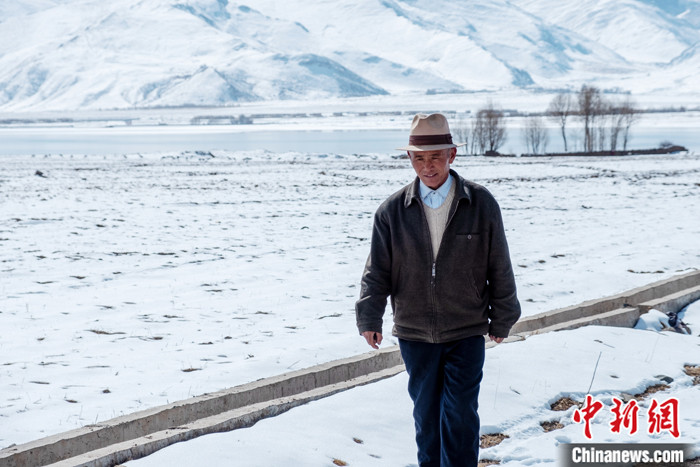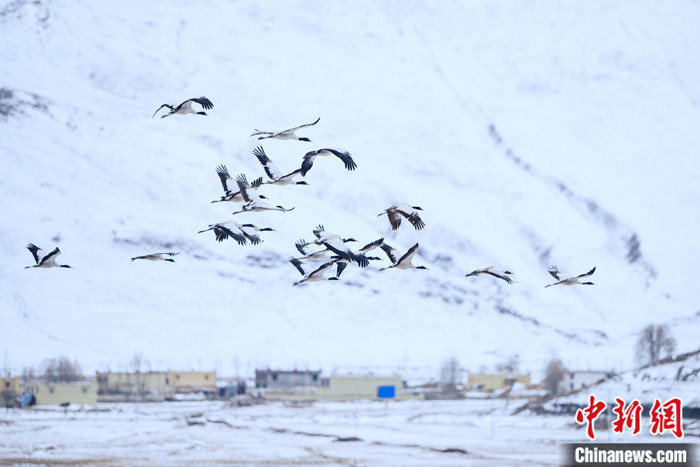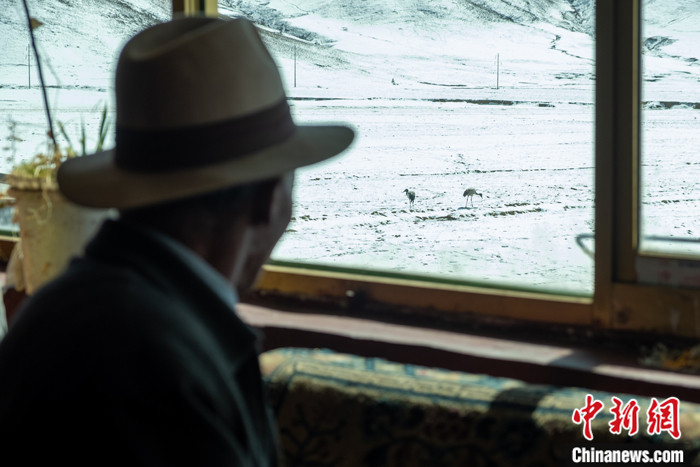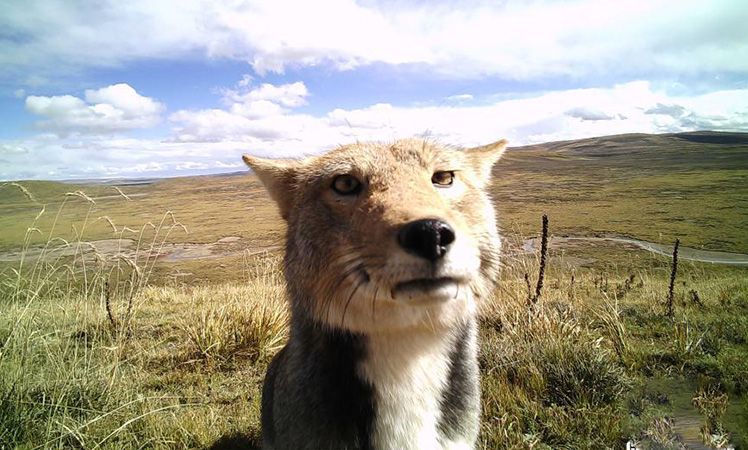Tibetan villager devotes himself to safeguarding black-necked cranes for seven years
Tenzin, a farmer and also a ranger at a nature reserve in Lhunzhub county, Lhasa, capital city of southwest China’s Tibet Autonomous Region, has been helping to keep black-necked cranes safe and healthy in their natural habitat for seven years.

Tenzin, a farmer and also a ranger at a local nature reserve, patrols the area near the Hutoushan Reservoir in Lhunzhub county, southwest China’s Tibet Autonomous Region, Feb. 23, 2022. (China News Service/Jiang Feibo)
Every year, the cranes, which are under first-class state protection in the country, will spend their winters in areas nearby the village where the 59-year-old lives, with the migratory birds returning to the prairies in northern areas during the springtime. Tenzin considers it as an auspicious phenomenon when the cranes overwinter in his home village. The species of crane is unique to the plateau region, and the Tibetan people regard them as sacred.
Tenzin’s daily routine includes patrolling, feeding and rescuing the cranes. When he is on duty, he makes sure that the cranes are not chased by any stray dogs and ensures the safety of any cranes that are sick or injured.
Tenzin explained that, along with eight other patrol officers, he would feed the birds with wheat provided by the county’s forestry and grassland bureau every winter season.

Black-necked cranes fly over the Hutoushan Reservoir in Lhunzhub county, southwest China’s Tibet Autonomous Region, Feb. 23, 2022. (China News Service/Jiang Feibo)
“This winter, our bureau has distributed more than 13,500 kilograms of wheat to the patrol officers to guarantee that the black-necked cranes have enough food,” said Luo Qin, a staff member from the bureau.
According to Luo, there are between 2,000 and 2,200 black-necked cranes wintering in the county right now, and the birds mainly make their winter home next to the county’s two reservoirs, especially the Hutoushan Reservoir near Tenzin’s village.
Tenzin said in addition to offering enough food and favorable climatic conditions, the harmonious coexistence between villagers and wild animals living in the area is also an important reason why the cranes continue to overwinter in his village and at the Hutoushan Reservoir.
The efforts are paying off, with the number of black-necked cranes in Tibet having grown to more than 10,000 from fewer than 2,000 at the end of the 20th century.

Photo taken on Feb. 23, 2022, shows two black-necked cranes foraging outside Tenzin’s home in Lhunzhub county, southwest China’s Tibet Autonomous Region. (China News Service/Jiang Feibo)
Photos
Related Stories
- Story of a family devoted to protection of red-crowned cranes
- Migrating gray cranes seen at Agamon Hula Conservation Lake in Israel
- Endangered crane population surpasses 10,000 in Tibet
- Cranes welcome the arrival of spring in NE China's nature reserve
- Measures taken to protect habitat of black-necked cranes in Zhaotong, Yunnan
- Rare black-necked cranes wintering in Yunnan
Copyright © 2022 People's Daily Online. All Rights Reserved.










